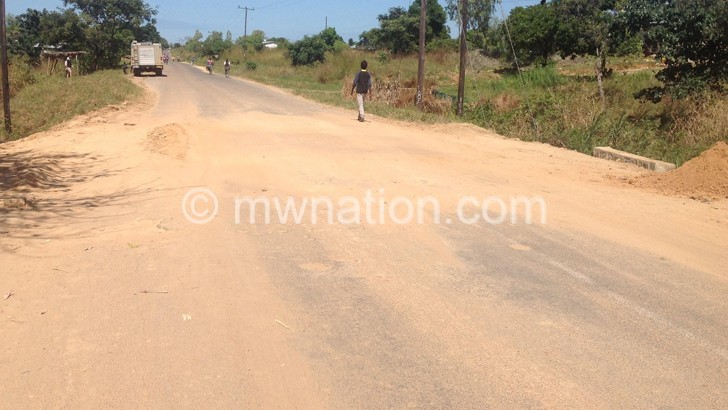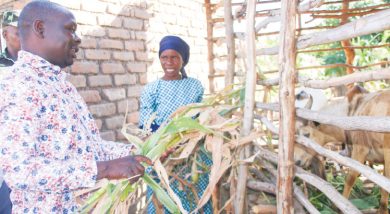Lakeshore Road a death trap
Travelling on Kaphatenga-Dwangwa Road is not easy. The M5 stretch, built in the 1980s, can no longer stand the test of time.
It is cracking. Yawning potholes worsen the discomfort travelers suffer on the road marked with archaic, single-lane bridges, ridges of sand, tricky bends and perennial wash-aways.
An equally antiquated drainage system has reduced the 115-kilometre Lakeshore Corridor into a bumpy trail.
The road that splits Dwangwa sugar plantations is being shattered as government has neglected it for decades despite its economic value.

A rain season hardly passes without washing away a valley section, especially between Nkhotakota and Kaphatenga.
Millions are spent on maintaining the lakeshore road, one of the busiest roads in the country.
Accidents are not rare as motorists precariously keep their vehicles on the white line, evading potholes and jagged edges of the road.
Between January and February, Nkhotakota traffic police recorded about 18 road accidents mostly attributable to reckless overtaking.
Japhet Banda, a minibus driver who plies between Dwangwa and Nkhotakota, is one of frequent motorists who endure the daunting task of dodging potholes.
The journey that used to span almost 90 minutes now takes almost three hours due to the pathetic state of the road.
“I always have to mind my speed because even the recommended speed limit can be dangerous,” he says.
Passengers rant at the minibus driver for driving too slowly and subjecting them to bumps, but it is not his fault.
Our voyage was marked by persistent stops not to pick passengers, but to pave the way for trucks carrying sugar and raw cane.
“Traveling on this road is now difficult, a huge headache to many,” he says.
The situation gets tougher when the sugar milling season begins at the estate owned by Illovo.
“Each morning, trucks carrying sugarcane cram the road. This affects our business,” he says.
Pupils in roadside schools are fearful as danger warning signs have been vandalised.
Rachel Munthali, who is in Standard 5 at Walemera Primary School, says children are at risk of being hit as most schools have no road signs to alert drivers approaching schools.
“We only learn about road signs and pedestrian crossings in class. We don’t see them on the road,” she says.
Government says it has plans to upgrade the road.
But as it has been the case for decades, people will only believe once rehabilitation works begin.
Last September, President Peter Mutharika said during a whistle-stop tour of Dwangwa that government would upgrade the road because it is pivotal to the economy.
Residents and road users are eagerly waiting to see if the promise is not just another broken promise.
Minister of Transport and Public Works Jappie Mhango aptly calls the Nkhotakota-Dwangwa section “a death trap”.
Yet he sounds uncertain as to when government will start the promised upgrade.
He says this may take time as there is need to conduct a feasibility study and to redesign the road.
This points to continued hassles for motorists.
“The process of rehabilitating the road takes a bit of time because there is a number of things we have to put together. The road is in a very bad state and I cannot say we will do it tomorrow,” he says.
His ministry is working tirelessly to redesign the road and establish the cost of maintenance works, he explains.
By contrast, Roads Authority (RA) says the body already conducted both the feasibility study and produced detailed engineering designs in 2014.
RA public relations manager Portia Kajanga says the proposed works in the report it submitted include replacing single-lane bridges with double ones and improving the drainage system.
“The feasibility study and detailed engineering design for the rehabilitation works cost about K140 million,” she says.
Kajanga says some of the problems affecting the road could be avoided if communities by the roadside played a role by reporting vandalism of metal culverts and signs which cause wash-aways and accidents, respectively.
While the minister and the RA are no speaking the same language, what road users want government to do is swift action.
The contradictory sentiments cast doubt as to when government would be ready to upgrade the road.
Surely one of the two is not telling the nation the truth.
As this continues on the road connecting Nkhata Bay with Salima, which transports tourists to various attractions on the shoreline of Lake Malawi, will continue facing untold misery, risking their lives and poverty and doubting the promises Mutharika makes.





